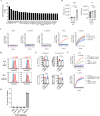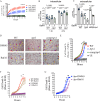Staphylococcal toxin PVL ruptures model membranes under acidic conditions through interactions with cardiolipin and phosphatidic acid
- PMID: 40233125
- PMCID: PMC12052211
- DOI: 10.1371/journal.pbio.3003080
Staphylococcal toxin PVL ruptures model membranes under acidic conditions through interactions with cardiolipin and phosphatidic acid
Abstract
Panton-Valentine leukocidin (PVL) is a pore-forming toxin secreted by Staphylococcus aureus strains that cause severe infections. Bicomponent PVL kills phagocytes depending on cell surface receptors, such as complement 5a receptor 1 (C5aR1). How the PVL-receptor interaction enables assembly of the leukocidin complex, targeting of membranes, and insertion of a pore channel remains incompletely understood. Here, we demonstrate that PVL binds the anionic phospholipids, phosphatidic acid, and cardiolipin, under acidic conditions and targets lipid bilayers that mimic lysosomal and mitochondrial membranes, but not the plasma membrane. The PVL-lipid interaction was sufficient to enable leukocidin complex formation as determined by neutron reflectometry and the rupture of model membranes, independent of protein receptors. In phagocytes, PVL and its C5aR1 receptor were internalized depending on sphingomyelin and cholesterol, which were dispensable for the interaction of the toxin with the plasma membrane. Internalized PVL compromised the integrity of lysosomes and mitochondria before plasma membrane rupture. Preventing the acidification of organelles or the genetic loss of PVL impaired the escape of intracellular S. aureus from macrophages. Together, the findings advance our understanding of how an S. aureus toxin kills host cells and provide key insights into how leukocidins target membranes.
Copyright: © 2025 Chow et al. This is an open access article distributed under the terms of the Creative Commons Attribution License, which permits unrestricted use, distribution, and reproduction in any medium, provided the original author and source are credited.
Conflict of interest statement
The authors have declared that no competing interests exist.
Figures






References
-
- Gillet Y, Issartel B, Vanhems P, Fournet JC, Lina G, Bes M, et al.. Association between Staphylococcus aureus strains carrying gene for Panton-Valentine leukocidin and highly lethal necrotising pneumonia in young immunocompetent patients. Lancet. 2002;359:753-59. - PubMed
MeSH terms
Substances
LinkOut - more resources
Full Text Sources

